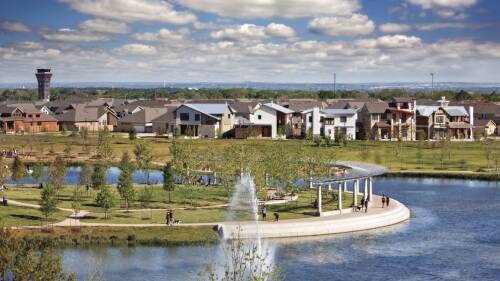Mixed Use and Multi-Use
One of two dozen research groups housed at MIT’s Media Lab, the Changing Places group is focused on developing new, more efficient, and creative mobility systems and ways of living and working in cities at a time when urban populations are growing, while the resources to sustain them are shrinking. Kent Larson leads the group and shared several of Changing Places’ projects during the closing keynote speech at the recent ULI Florida Summit in Miami.
A new ULI report describes a variety of public financing tools for cities seeking to reinvent themselves and attract greater private investment. The report, however, is not about any one specific financing tool or taxing mechanism, but about the leadership, strategic vision, and political will necessary to create a plan for reinvention and execute it. Expert panelists discussed how these challenges played out in Pittsburgh; Greenville, South Carolina; and Cincinnati at the recent ULI Housing Opportunity Conference in Boston.
When the city leaders of Austin, Texas, decided in the late 1990s to move the local airport to a larger tract of land, they faced a vital question: How could the city best use the soon-to-be-abandoned 700 acres (283 ha) of prime land that lay just a few miles northeast of downtown?
The growing economic impact of millennials, growing demand for dining, and increasing interest from international brands are transforming the American retail real estate landscape.
Ten high-tech companies are redefining the workplace. The following projects include adapted textile factory buildings and liquor distribution warehouses, workplaces with amphitheaters and secret rooms, and a net-zero-energy structure.
Robotic vehicles, drones, and other cutting-edge technological advances could soon reshape urban land use as radically as the automobile once did. Here are some leaders’ thoughts on how the future might look.
How public and private interests combined forces to overhaul the transit hub, now home to San Francisco’s tallest building, Salesforce Tower.
For a second consecutive year, a team representing the University of Maryland has taken top honors in the 2015 ULI Hines Competition with its winning master plan proposal that transforms the Tulane/Gravier and Iberville neighborhoods in downtown New Orleans.
By the end of 2014, the writers and editors of Condé Nast will finish moving into the publishing company’s new 1.25 million-square-foot (116,000 sq m) headquarters in lower Manhattan. That’s just the latest good news from that part of Manhattan, which is once again one of the most desirable neighborhoods in the world, despite surviving a hurricane, the global financial crisis, and the 9/11 attacks.
In this book, authors John Massengale and Victor Dover analyze great urban streets from around the world in text, pictures, and drawings. These range from the iconic Champs-Élysées in Paris and Las Ramblas in Barcelona to important but lesser-known streets such as Main Street in Nantucket, Massachusetts, and Church Street in Charleston, South Carolina









